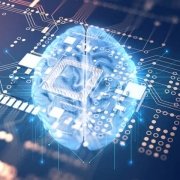What Is Generative AI?
Artificial Intelligence (AI) is no doubt a basic part of our digital world and is changing our lives every day. The big development in AI at the moment is generative AI. But what exactly is it? Bernard Marr, international best-selling author, popular keynote speaker, futurist, and a strategic business & technology advisor, shares an article on Forbes breaking down this sub division of AI and its current and potential applications in almost every aspect of our lives. “Just like it sounds, it’s AI that can create, from words and images to videos, music, computer applications, and even entire virtual worlds,” says Marr. “What makes generative AI different and special is that it puts the power of machine intelligence in the hands of just about anyone… The new generation of generative AI tools gives us the power to build and create in amazing ways. With a little practice, we can even use them to build our own AI-powered apps and tools.”
Below, Marr breaks down the basics of Generative AI and its applications, as well as the current consensus on how this type of technology can help or even harm the way we work.
What makes Generative AI different from the others? “One distinction that’s worth understanding is the difference between generative AI and discriminative (or predictive) AI. Discriminative AI focuses mainly on classification, learning the difference between “things” – cats and dogs, for example. This is what’s used in recommendation engines like those used by Netflix or Amazon to distinguish between things you might want to watch or buy and things you’re unlikely to be interested in. Or in navigation apps to distinguish between good routes from A to B and ones you should probably avoid. Generative AI, instead, focuses on understanding patterns and structure in data and using that to create new data that looks like it.”
So What Can Generative AI Do? The first use cases for generative AI typically involved creating text and images. Since then, it has expanded its offering and can also be used to curate data-specific coding, audio, videos, data augmentation and virtual environments to name a few.
How Does It Work? Marr explains, “Like all of the AI we see today, generative AI grew out of a field of AI study and practice called machine learning (ML). While traditional computer algorithms are coded by a human to tell a machine exactly how to do a particular job, ML algorithms get better at their jobs the more data they are fed. Put a bunch of these algorithms together in a way that allows them to generate new data based on what they’ve learned, and you get a model – essentially an engine tuned to generate a particular type of data. Some examples of models used in generative AI applications include Large Language Models (LLMs), Generative Adversarial Networks (GANs), Variational Autoencoders, Diffusion models, and Transformer Models.”
Generative AI in Practice. There are already many uses of the application of generative AI such as advertisements for companies like Coca-Cola, a newly written Beatles song, generative designed lighter and stronger seatbelt brackets for General Motors automobiles, and the world’s first AI-generated immunotherapy cancer treatment. Marr adds, “Generative AI is also the technology behind the recent phenomena of deepfakes, which blur the lines between reality and fiction by making it appear as if real people have done or said fake things.”
The Ethical Questions Around Generative AI. While generative AI is capable of amazing things, Marr does point out the difficulties in this technology. “Perhaps one of the biggest is when we will get to the point where it’s impossible to tell the difference between what’s real and what’s generated by AI. Which leads to the question of what (if anything) we should do about it,” says Marr. “And then there’s the question of how this will affect human jobs – will the livelihoods of creators be threatened if the companies that employ them can create as many images, sounds and videos as they need just by telling a computer to do it?” Lastly, the issue of copyrighting comes to play. Who owns the product created by AI? Of course all of these questions need to be answered. But, as Marr concludes, how we answer them may well play an important role in determining the future of generative AI in society and in our lives.



